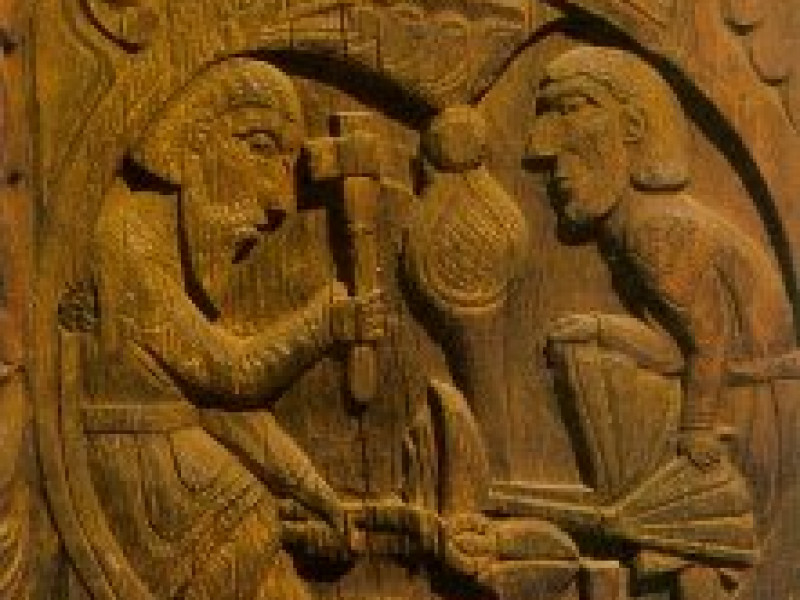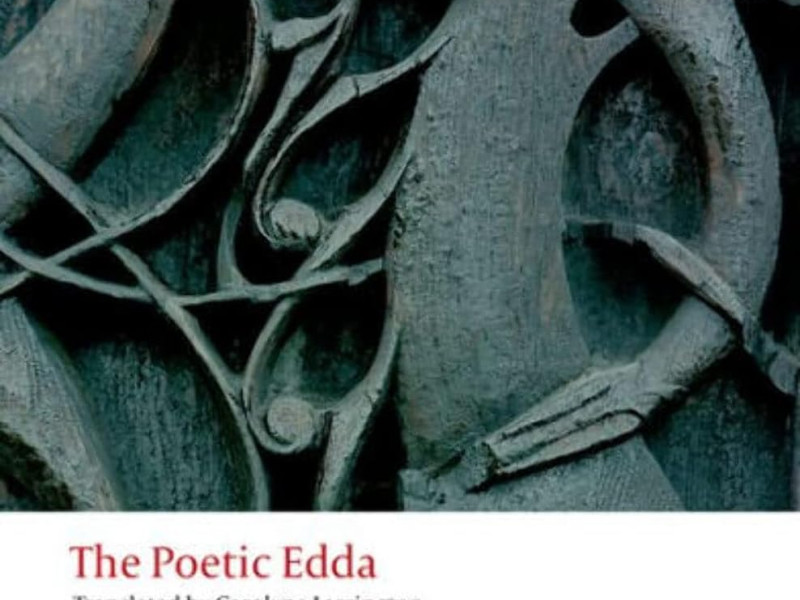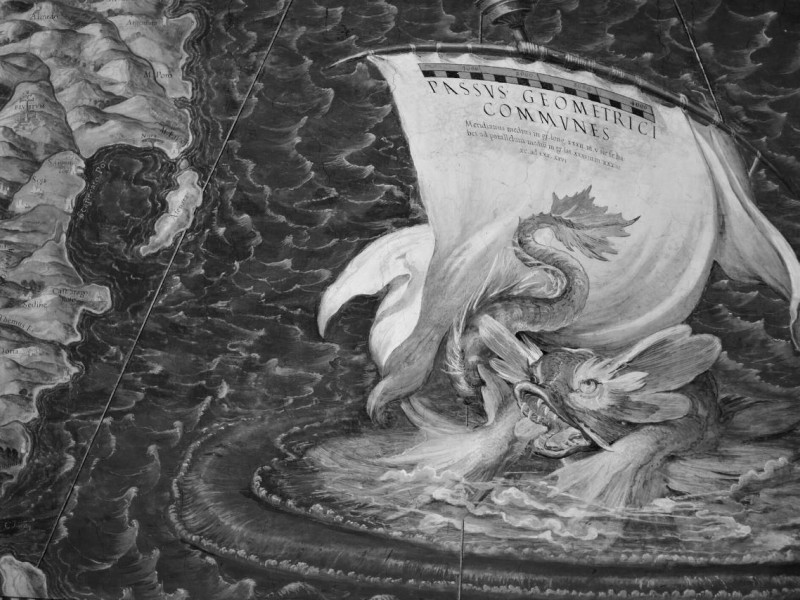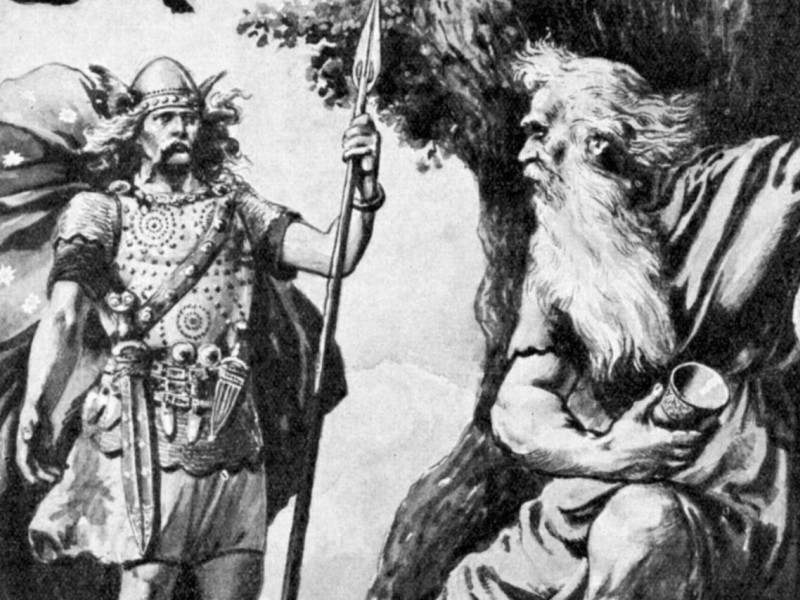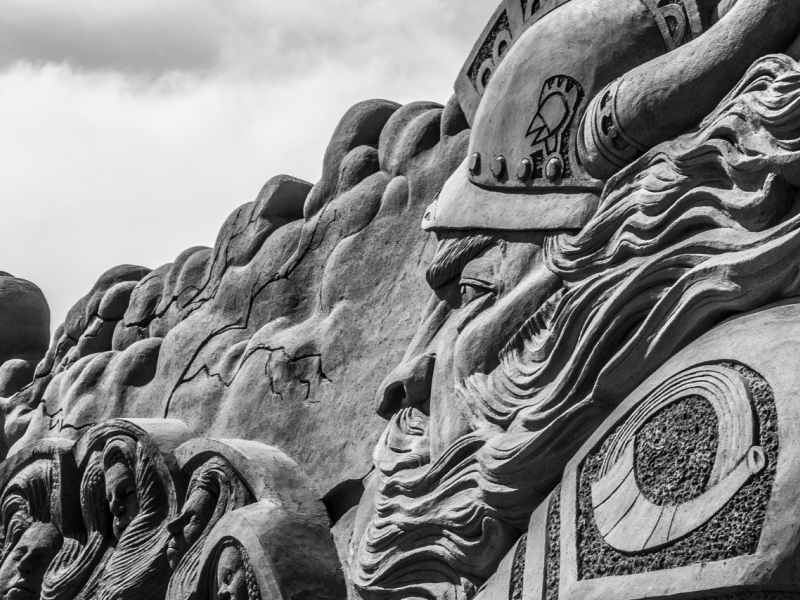About Norse Mythology
Who were the Norse and Germanic people?
The name Norse referred to a people and a language of the ancient Scandinavians (Norwegians, Swedish, Danish, and Icelandic). Technically, the word Norse means Norwegian, but it loosely included the Icelanders, Swedes, and the Danes as well.
Scandinavian consisted of part of the Germanic people and language. Some scholars and historians believed that all Germanic tribes originated from the Scandinavian Peninsula (Sweden and Norway) and Jutland (Denmark).
The Romans first encountered the Germans in the late 2nd century BC. The Teutones and Cimbri were Germanic tribes from Jutland (Denmark), migrating southward. The mighty Roman armies were badly mauled by the Germans at Noreia, north of the Alps, in 113 BC; and later at Arausio (Orange), in southern Gaul (France), in 105 BC. The Romans under its general Gaius Marius finally defeated the Teutones and Ambrones at Aquae Sextiae (modern Aix-en-Provence) in 102 BC and then the Cimbri at Vercellae in 101 BC.
Since the ancient Germanic peoples left no written records, we have to heavily rely on classical Greek and Roman historians as sources of information. Of course, we also depend upon archaeology as well. (Oh, sorry about using the "we" so freely, I am not an archaeologist.)
Other Germanic tribes began moving south into central Europe, often driving the Celtic people further south and west towards the Roman empire.
Julius Caesar encountered the various Germanic tribes during his campaigns in Gaul (modern France and Belgium), in the mid-1st century BC. Caesar tried to keep the Germans east of the Rhine River. Sometimes Caesar fought these Germanic tribes; at other times he enlisted them in his army, serving as cavalry. Caesar, who wrote about his campaigns in his memoirs, managed to distinguish the Germans from the Celts. He described the Germans as having a towering physique and as belonging to a warlike society. He briefly touched on Germanic religion, comparing the Germanic deities with those of the Romans, but using Roman names such as Mercury and Mars.
Tacitus, the Roman historian of the 1st century AD, gave a better description of the Germanic peoples and their society. Tacitus also distinguished and compared their deities with Roman deities, also giving them Roman names.
Tacitus called those who had lived in ancient Sweden as the Suiones. The Roman knowledge of the region was gained from trade links. According to Tacitus, the historian identified a number of tribes that had left the Scandinavain Peninsula before his time: Burgundians, Gepidae, Goths, Rugii, Vandals, and several others. Some of these migrating tribes, particularly the Goths, would have a great impact on the collapse of the Western Roman Empire in the succeeding centuries.
Throughout the 1st and 2nd centuries AD, the Romans tried to keep the Germans east of the Rhine and north of the Danube, with a mixture of successes and failures. However, in the third and fourth centuries, new Germanic tribes caused considerable strain to the Roman military and empire. The Germanic people were pressured into migrating further south and west into Europe by the Huns, a Turkic nomadic people from the steppes of Central Asia. The Huns started migrating westward, driving the Germanic people from their home in Eastern Europe.
The Goths were a Germanic tribe from Scandinavia before moving to Poland during the 1st century AD. The Goths migrated to a new home, dividing their tribe into two, with the Visigoths moving to the mouth of the Danube (Romania), while the Ostrogoths moved to the north shore of the Black Sea in modern Ukraine.
During the late fourth and fifth centuries AD, the period of the Great Migration, the Huns pushed westward into Europe, forcing the Germanic tribes to also migrate into Western Europe. The Visigoths, under the leadership of Alaric, moved as far as southern Italy, sacking Rome after a short siege, as well as travelling to Gaul (France) and Spain. The Ostrogoths migrated to northern Italy.
Such was the perilous state of the Western Empire that in AD 410, the Emperor Honorius gave the order for the Roman legions to abandon their posts in the province of Britannia, leaving Britain defenceless.
The Burgundians may have also come from Scandinavia, on the southern shores of the Baltic Sea. They may have originally lived on the island of Bornholm before migrating to the valley of the Vistula River. Then in AD 413, the Burgundians arrived in the area around the Rhine, establishing their capital in Worms, which was originally called Borbetomagus by the Celts and Civitas Vangionum by the Romans.
Eventually, the Huns established a large empire north of the Danube. The first time the Romans encountered the Hunnish warriors, they inspired fear because of their skills in horsemanship and their accuracy with archery. At first, the Huns served as mercenaries in the Roman armies of both the Eastern and Western Empires.
A single ruler named Rua managed to gain control of the various clans of the Huns in AD 432, but he died two years later. Attila and Bleda, Rua's nephews, ruled jointly in AD 434.
In AD 441, when the Eastern Roman Empire didn't honour their treaty with Attila to pay tribute in gold, Attila and his Hunnish army went raiding into the Eastern Roman Empire, devastating a vast amount of territories.
Attila became the sole ruler of the Hunnish empire after he murdered his brother Bleda in AD 445. The Huns were known for their skill in horsemanship and their brutality in warfare.
The Roman general named Flavius Aëtius, serving the Western Roman Emperor, Valentinian III, used the Hunnish mercenaries to destroy the Burgundian kingdom at Worms, in AD 437. The Burgundian king, Guntharius, was killed in the fighting.
In AD 446, the people of Roman Britain gave one last appeal to Aetius, but no aid came to them because the empire was threatening to collapse from the onslaught of the Huns. In AD 451, Aetius led the mixed armies of Romans, Visigoths and Burgundians. They fought in a great Battle at Chalons, defeating Attila.
Although the Hunnish Empire under Attila collapsed at his death (AD 453), the western Roman Empire was seriously weakened. The Roman army lacked sufficient strength to defend themselves against the various Germanic tribes.
Rome finally fell in AD 476, when the Romano-German commander Odoacer (obviously an Ostrogoth) seized power, and named himself king of Italy. With the collapse of the Western Roman Empire, Western Europe fell under the shadow of a Dark Age.
In AD 493, another Ostrogoth leader named Theodoric the Great deposed Odoacer and claimed the kingdom of Italy as his own kingdom.
Was there any historical connection to Norse myths?
The reason for this little history lesson about the movement of Germanic peoples was that some of the characters in the Nibelungen cycle of the Norse and German myths/legends may have their origins with real people from the 4th to 6th centuries AD, known as the Migration Period.
Guntharius was a Burgundian king who ruled at Worms, until the Huns wiped out his army in AD 437. Guntharius was killed in the fighting. Although Guntharius was a contemporary of Attila, Attila was really not involved with his death. These Huns were mecenaries hired by the Roman general Aetius, who served the Roman emperor, Valentinian III (reign AD 422-455). Guntharius appeared in the Germanic myths as Gunther, and in the Norse myths as Gunnar.
The figures Kriemhild (Germanic) and Gudrun (Norse) may be traced to Attila's last bride, Hildico or Ildico. Hildico was a German (Visigoth) girl, who was in bed with Attila when he died on their wedding bed, in AD 453. Some historians believed that the girl murdered Attila. However, a more reliable account suggested that Attila's death was the result of effusion of blood. Yet, the legend that the girl murdered Attila persisted, like those found in Norse legend. Attila the Hun was called Atli by the Norse myths and Etzel in Germanic myths.
In the Völsunga Saga, other mythical or legendary characters can be identified with other historical figures. Ermanaric (died in AD 375), the Ostrogothic king, was identified with Gothic king Jormunrek in the Norse myths. Sunilda, the woman Ermanaric punished by having her torn apart by wild horses, was identified with Swanhild (Norse). The account of Ermanaric and Sunilda bear a striking resemblance with the last section of the Volsunga Saga. In the German legends, he appeared as Ermanaric; while in the Norwegian saga Thidrekssaga he was called Erminrek.
Theodoric the Great, the Ostrogothic king of Italy (AD 493-526), was associated with the hero Dietrich von Bern, who appeared in the Nibelungenlied. In the Norwegian saga called Thiðreks Saga, Theodoric or Dietrich appeared as Thiðrek. Theodoric, who was historically later than Ermanric, Attila and Guntharius, now appeared as contemporary with all these other figures in the legends.
In the Beowulf, an Anglo-Saxon epic, two characters, Sigemund and his nephew Fitela, are probably allusions to Sigmund and Sinfjotli. Here, Sigemund was identified as a slayer of a dragon, not Sigurd.
Is there any historical foundation for the hero Sigurd? Well, there is a remote possibility that he was the Frankish king named Sigbert I. He was married to a Visigothic princess named Brunhild. Could that possibly be identical to Brunhild in the Nibelungenlied or to Brynhild of the Völsunga? However, in the myths Sigurd/Siegfried was married to Gudrun/Kriemhild, not to Brynhild/Brunhild.
You will find more similarities when you read in historical accounts that Brunhild tried to avenge her husband, when his in-laws (Brunhild's family) murdered Sigbert. Of course, it was Kriemhild/Gudrun who tried to avenge her husband in the sagas. Nevertheless, the similarities are rather striking.
I couldn't find any historical character that matched Hogni in the Norse myths and Hagen in the German legends.
Whether there was any real connection between the historical accounts and the mythical or legendary figures, will probably remain a mystery.
Sources for Norse myths
Before I read the Völsunga Saga, I had read the German version of the Nibelungen cycle, called the Nibelungenlied. I bought the Nibelungenlied some 10 or 12 years ago. That was mainly because I could not find the English translation of the Völsunga Saga (though I knew of its existence). When I created the Völsunga Saga pages, I had to use the electronic text from the net, before I found the book called the "Saga of the Volsungs" for my sources on the Volsunga Saga.
I also read the Poetic Edda (heroic cycle) recently. In Timeless Myths, I had relied totally on the Völsunga Saga for the story of Sigurd and the Giukings (Nibelungs).
However, I did use the Poetic Edda (mythological cycle) for the stories of the Norse Creation and Ragnarök, and other stories of the gods and giants. Another book I relied on for the stories about the Norse gods, comes from the Prose Edda, written by Snorri Sturluson.
Please note that I will NOT include the historical and family sagas from Norse literature. I am less interested in these sagas than the mythological tales. So don't bother asking me any questions about these works, since I haven't read them.
The exception, of course, being the Ynglinga Saga, which was the first part of Heimskringla (The Chronicle of the Kings of Norway). The Heimskringla was another work by Snorri Sturluson. The Ynglinga Saga contains a small section about Odin, Njord, Freyr and Freyja, so I thought it would be useful to read the Ynglinga.
I have only recently included the tale of the Nibelungenlied in Timeless Myths. I may include other German works, to allow you to compare the Germanic version with the Norse.
I could not find a translation of the Thiðreks Saga, but there is a good summary of the story found in the appendix in my copy of the Nibelungenlied. This Norwegian saga resembled more of the Nibelungenlied than the Volsunga Saga, because the Thiðreks Saga relied on the German tradition or sources.
Check out the Bibliography for the Norse myths to see the books I have or haven't used for the Norse myths.
By Jimmy Joe

